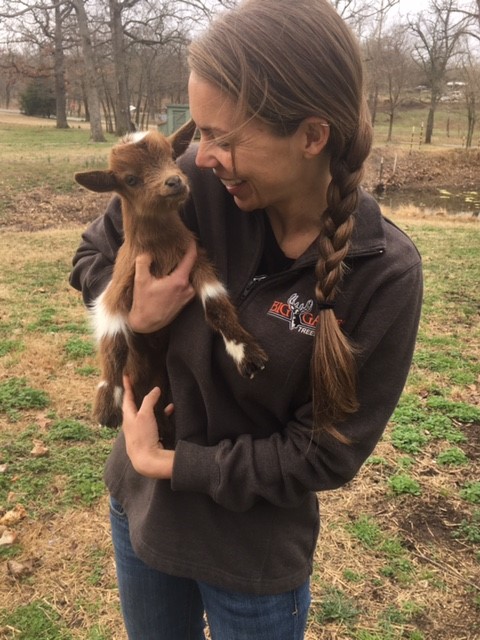BUILDING THE FUTURE: Virtual education offers flexibility for teachers
Virtual education provides a lot of options and flexibility for parents, school districts, and students, but it also offers a lot of benefits for teachers.
Ashley Fryer, a science and health teacher at the public, state-wide Insight School of Kansas, said she first explored transitioning from a traditional brick-and-mortar classroom to the world of virtual education when her husband got a job which required a lot of extended travel.
“I wanted to be with him,” she said. “I got an email about teaching virtually and thought it would be perfect because I could teach from a hotel room. When I took the job I thought I would do it for a year or two and then when he was finished traveling and we were able to stay put, I would go back to a traditional setting.”
But as Fryer got used to teaching online, she discovered that she loved it.
“I was really surprised with the closeness and the relationships that I had with my students,” she said. “So we settled down and bought a farm. There is no way that I would go back to a traditional setting now.”
Today, Fryer gets up every morning and feeds a menagerie of animals on her hobby farm, then steps into her home office to check emails, grade papers and hold some small group or one-on-one sessions with students who are struggling with some of the subject matter.
 “I have the luxury of living in the country where it is quiet (minus occasional animals) and so if I luck out in the weather department, I am able to conduct small groups or one-on-one sessions on my back deck,” said Fryer. After lunch, she sets up for that day’s live labs on her kitchen counter. “I run to the basement to start a load of laundry, grab my glass of water, set up my station, and it’s time for class. I teach my 6th-, 7th- and 8th-grade science classes for an hour each. This is the best part of my day. We go through my power point, complete labs, play review games, and work on assignments. If we have time, I will show a new litter of puppies, a baby chick, or a really cool insect I found.”
“I have the luxury of living in the country where it is quiet (minus occasional animals) and so if I luck out in the weather department, I am able to conduct small groups or one-on-one sessions on my back deck,” said Fryer. After lunch, she sets up for that day’s live labs on her kitchen counter. “I run to the basement to start a load of laundry, grab my glass of water, set up my station, and it’s time for class. I teach my 6th-, 7th- and 8th-grade science classes for an hour each. This is the best part of my day. We go through my power point, complete labs, play review games, and work on assignments. If we have time, I will show a new litter of puppies, a baby chick, or a really cool insect I found.”
She said K12, a national virtual education provider who supplies courses for Insight School of Kansas, sends each of her students their own home lab kit filled with everything they need to succeed in the course they are enrolled in.
“Sixth grade is earth science, so we send them a rock and minerals kit with a magnifying glass and scratch pad and they also get some sand, rocks and modeling clay,” said Fryer. “They get a whole kit and then can use some household items like toothpicks or soil from their yard to complete the labs in their own home.”
Fryer also leads a nationwide virtual hobby farm club for K12 students.
“I have 400 students from all over and we meet 2 times a month,” she said, explaining that students in the K12 system can sign up for a wide variety of virtual clubs in addition to their regular classes. “I ask for presenters from the club members. For example, I have never done aquaponics but it is super cool and I had two students who have amazing systems and they were happy to share pictures and videos in a presentation for our club.”
For her regular science classes, Fryer says she draws students from throughout the state of Kansas.
“I have rural kids out on the farm,” she said. “We have some inner-city kids who were in schools where they did not feel safe. I have kids who have struggled because of a learning disability or physical issue. And, we have a lot of really gifted kids who in a traditional setting were really frustrated.”
Virtual education makes it easy for Fryer to tailor her lessons to each type of student and to get instantaneous feedback on how they are doing in the course.
She said she also gets a lot of support through K12.
“All of our new teachers have mentors,” said Fryer. “We get together for professional development in a face-to-face setting three or four times a year and we have a wonderful support department. We also have instructional coaches who are phenomenal.”
Fryer said that learning in a virtual environment is not the right fit for every student, but that it should be an option for every student.
“When I was at a brick-and-mortar school, I can look back now and specifically name students who were not successful in that traditional setting but would be awesome in our school,” she said. “I wish it was an option for every state and every student. There are students at every school who are not successful and many of them would thrive in our environment. They should at least have that choice and that opportunity.”
« Previous Post: CEAM TEAM IN ACTION: CEAM helps students in need, supports parents
» Next Post: Imagine if you could redesign the education system